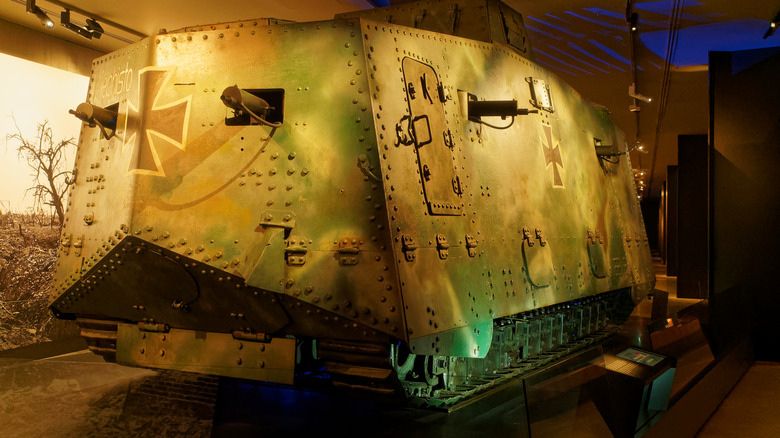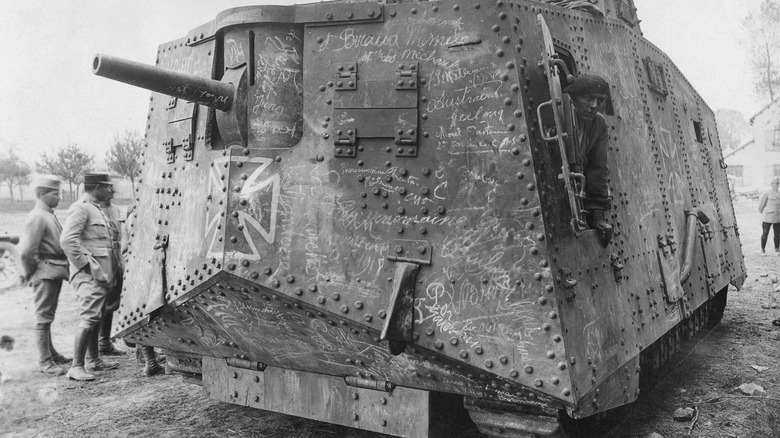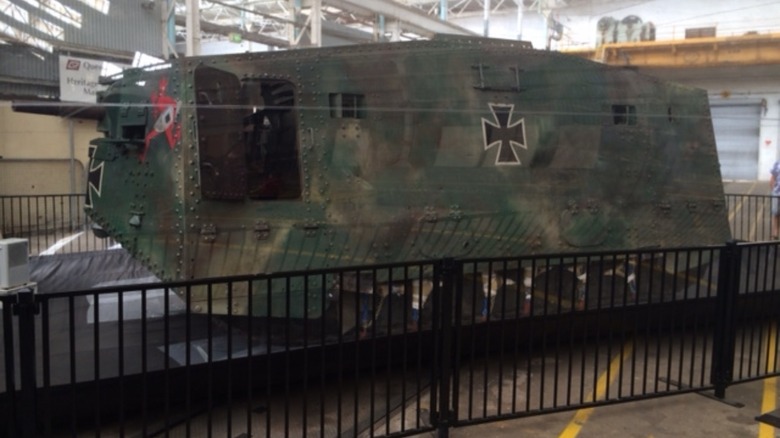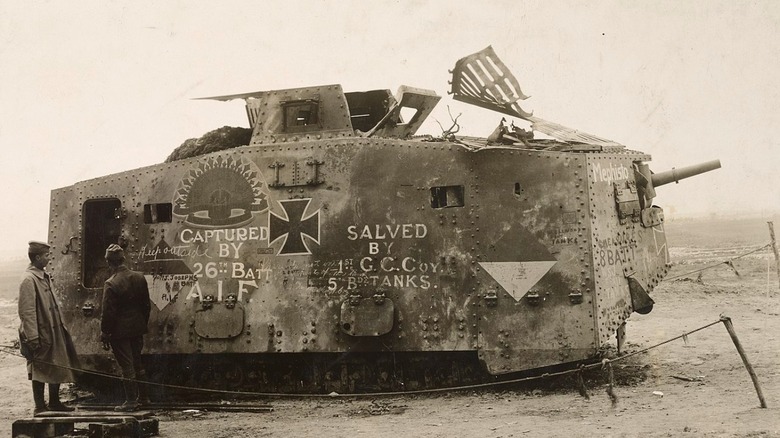The World War I 'Mephisto' Tank: Where It Is Now
The Mephisto tank first arose as a sort of evolution of armored cars that were already starting to find a role in combat, like the British Royal Naval Air Service's Rolls Royce Ghosts of 1914. Such vehicles, of course, would have been rendered useless against the wide, defended, blockaded trenches that the opposing sides would go on to employ in World War I. What was needed was something bigger and more powerful, and that was exactly what Britain's Admiralty Landships Committee was created to devise.
This committee came up with the design for the first ever tank, Little Willie, in September 1915, though it wouldn't see combat and was more of an exercise in putting armor, treads, gun, and engine together as a weapon. However, it laid the foundation for the the first tank to ever see live combat, the Mark I, which arrived on the battlefield in September 1916.Since each side in warfare is keen to adopt any innovative new weapon the other creates for themselves, Germany created the formidable A7V Sturmpanzerwagen tank in response.
Though this tank arrived late in World War I and in very small quantities (a meager 20 of them were manufactured), there's no doubt that it made quite the impact. This tank has an extraordinary tale to tell and went on quite the odyssey after the war. Today, just one A7V named "Mephisto" still exists. This is the story of Mephisto, where it is now, and why the A7V model itself is important.
The A7V was a major development for Germany in WWI
German forces procured a Mark II tank left by the Allies during the Battle of Arras, which began in April 1917. This, and the capture of other models like it, helped Germany field tanks of its own and learn more about opposing ones. Indeed, Steven J Zaloga's "German Panzers 1914–18" explains that "the majority of German panzer units actually used captured British tanks, the Beutepanzer."
Their assault efforts would be aided by Germany's own tanks, the A7V. In 1918, when the A7V was introduced, the British had begun fielding the Mark V, the original model of which was a 29-ton heavy tank with a crew of eight, armed with dual 6-pound guns.
The A7V was some four tons heavier, measuring around 24 feet in length to the standard Mark V's 26 feet. Its dimensions were similar, but the A7V was a comparative hive of activity within: It could have up to 26 crew members. Proximity to the engine and the sheer number of people inside a vehicle of these dimensions resulted in a chaotic, hazardous experience. Heat-resistant suits featuring asbestos were the crew's best protection. With armor up to 30mm thick and a top speed of 10 mph, it was relatively sturdy. Not to mention, the tank also boasted a 57mm main armament and a large suite of MG 08s.
The Australians wanted to take Mephisto home post-war
During the war, hasty attacks and retreats meant that a lot of otherwise-valuable supplies, weapons, and vehicles would have to be left behind, while still more were damaged beyond repair and abandoned. In the case of Mephisto, the only remaining A7V recovered, it had simply become trapped in uneven, artillery-blasted terrain during a battle against the British and Australian forces in the region of Villers-Bretonneux in April 1918.
It wasn't until mid-July that the area where Mephisto languished was taken by the Allies, who then devised a plan to haul it free. It had been one of 13 A7Vs that took part in the wider battle, and the unusual nature of the machine made it a tempting target for the Allies to claim. The operation was led by the Australian Imperial Force, the 26th Battalion of which used cabling and allied tanks to haul the out-of-commission machine away with brute force.
Once recovered, it would remain in France for some time, but the well-traveled vehicle had thousands of miles to go before reaching its final destination. Australia's 5th Brigade's base was nearby in the region of Amiens, and that's where Mephisto went next. Soon, however, it was time to decide what would be done with the tank in the longer term.
[Image by Barnabyd via Wikimedia Commons | Cropped & scaled | CC BY-SA 4.0]
Mephisto made heavy cargo on its epic journey to Australia
In an article published in the aftermath of the war, The Brisbane Courier dubbed Mephisto "one of the most interesting and unique of the many trophies won by Australians in the battlefields of the Great War." The Australians wanted to take their prize home, and that's exactly what they did.
From Dunkirk, it was first shipped to Britain before leaving London on an Australia-bound ship. The steamer Armagh arrived at Brisbane's Norman wharf with Mephisto in June 1919. As The Daily Mail reported, the tank was "the heaviest lift which has yet been made out of the hold of a steamer in Brisbane."
Mephisto has resided in Australia for more than a century since. It was taken from the wharf to the Queensland Museum in August of that year, The Brisbane Courier stated, "drawn by two of the City Council's steam rollers," to be displayed outdoors until 1986. Then, preservation concerns led to an indoor installation being created. It's now found in the museum's Anzac Legacy Gallery, where it has been housed ever since.
[Image by Skyring via Wikimedia Commons | Cropped & scaled | CC BY-SA 4.0]
Mephisto and the A7V tank left a legacy
With historical events as significant as World Wars, there are countless "what if" scenarios that can be considered. Could large numbers of A7V tanks have turned the tides for the Axis Powers over the Allies in World War I? The A7V was a powerful yet fundamentally flawed design (its weight distribution reduced its stability and its shape wasn't particularly practical for its purpose), but it had considerable power with its 57-millimeter main armament.
The fact is, though, that it doesn't matter how powerful a weapon is there aren't enough of them to make a real impact. A grand total of 20 A7Vs certainly qualifies as insufficient, and Germany seemed to be directing its energies toward creating tanks like the Leichter Kampfwagen (light combat car) II instead.
As it stands, just one A7V ended up surviving the war, anyway: the famed Mephisto. Just as with the German Beutepanzer forces, this tank was claimed by the enemy — in this case just two months after hitting the battlefield. In contrast, though, it was wanted only as a showpiece.




